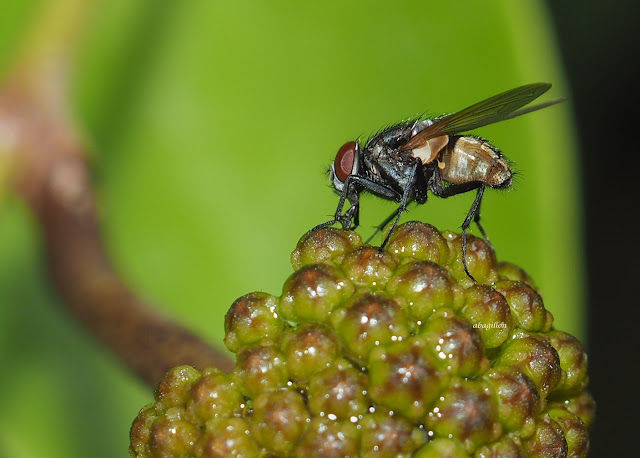Moths are assumed to be the pollinators of hoyas. There are still no concrete evidence to this assumption, but arises due to the fact that most hoyas open before dusk concomittant with the scent and nectar production. They remain so during the night. Some hoyas diminish the scent the following day and resume the strong aroma the following evening. It is not known if the receptivity of the stigma is continuous during the life of the flower.
Most moths are nocturnal or active at night. What else will the hoya flowers lure with their sweet scents if not for the nocturnal insects! This led to the assumption that they are hoya pollinators. However, concrete data or evidences to this assumptions are not yet published, so they still remain assumptions. I tried observing the insects that visit the hoyas, day and night whenever i have the time. But of course, night observations are very limited when i purposely go there with a flashlight and camera, a bit cumbersome task. Sighting moths are by chances only, purposeful observation needs some light source which disturbs them or chase them away. Sometimes the moths fly away before i can focus my lens. I was just lucky in documenting a few species because my garden is just a few meters from the terrace.
A moderately sized moth which allowed me to photograph it sideways and on top is not identified yet. The Philippine Lepidoptera group on Facebook are still trying to identify it.
top view of the first moth on Hoya fungii (sorry for the photo quality)
Genus: Lyclene (Erebidae, Arctiinae, Lithosiini)
AMATA WASP MOTH, Amata sp. (Erebidae; Arctiinae; Syntominae)
still NOID
Tiger and lichen moth; Trischalis sp. (Erebidae; Arctiinae; Lithosiini)
Above and Below are the same green moth. It is amusing and interesting as it always assume camouflage at the tips of hoya leaves. I tried driving it to move elsewhere, but it just landed on another hoya leaf and purposely sought the tip before it stopped moving. A perfect camouflage!
PYRALID MOTH, Doloessa sp.
(Pyralidae; Galleriinae)
a monkey moth, Eupterote sp.
Geometrid moth, Agathia sp.
BLUE GLASSY TIGER, Tirumala ishmoides
METALLIC CAERULEAN, Jamides alecto manilana
Hypolimnas bolina philippensis
BROWN PANSY, Junonia hedonia ida
This is seen on the grasses at the ground under the hoyas.
A common mormon pupa on a Hoya mindorensis, isn't it great. But this was only possible because a young hoya plant was near the base of the citrus plant, the host for this butterfly larvae. The other week i just saw the caterpillar munching on the citrus leaves, now it has pupated. I wish it will eclose next weekend when i am home again.



























